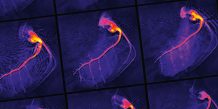HYPERMAG’s hyperpolarized MR scan will soon be ready for use with cancer patients
In its magazine DYNAMO, the Technical University of Denmark recently wrote an article about the Center for Hyperpolarization in Magnetic Resonance’s (HYPERMAG) hyperpolarized MR -scan that will soon be used with cancer patients.

In a four-page spread in the latest publication of the magazine DYNAMO by the Technical University of Denmark, you can gain insight into many of the research projects that are happening at the DNRF’s Center for Hyperpolarization in Magnetic Resonance (HYPERMAG). The article digs into the center’s research and is published on the occasion of the center’s technology on hyperpolarized MR scans that will be used in clinical studies on cancer patients at Skejby Hospital. Jan Henrik Ardenkjær-Larsen is head of center at HYPERMAG, and he invented the technology when he was working in the medical industry 15 years ago.
“Our technology has luckily come so far that it is in the hands of doctors who can begin to make clinical studies on humans. It is a milestone for the method [hyperpolarization] because medical imaging is extremely important to diagnose, characterize and follow up on diseases,” said Professor Ardenkjær-Larsen to the Technical University of Denmark.
In hyperpolarization, a tracer– e.g., glucose – is magnetized by injecting it into the patient, where it is absorbed into the cells. The tracer enhances the MR signal more than 20,000 times, which makes it possible to follow the cells’ metabolism with extreme precision. Since cancer cells have a high metabolism, those cells will convert the glucose much faster than other cells. In the end, it means that the method makes it possible to follow the cancer cells’ activity closely and relatively fast, both before and after a treatment. In that way, the doctors can see the effect of chemotherapy, for instance, faster than ever before.
So far, the method has only been used on animals at Skejby Sygehus and the Rigshospitalet, but starting at the end of 2017, Skejby Sygehus was allowed to use hyperpolarized MR scans on patients with pancreatic cancer.
The researchers at HYPERMAG are currently working on how to implement hyperpolarized MR scans on other diseases that likewise are expressed through metabolism, such as diabetes and coronary heart disease.
You can also read the article (in Danish) from DYNAMO in their online magazine here.
